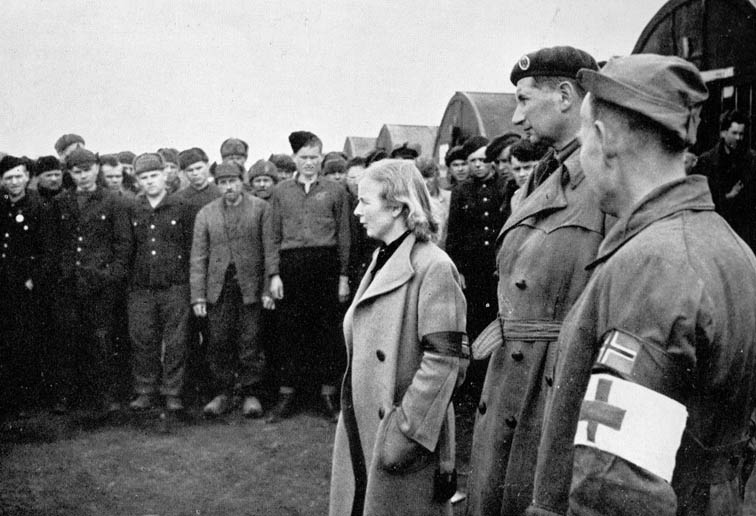C - Everyday Life and Minorities in the North: Comparison and Pericentrism
Several sub-projects in this WP will adopt a comparative perspective on the German occupation and its effects on Northern Norway, Northwest Russia and Northern Finland, with regard to everyday life and the position of minorities. While addressing the special features of the social history of the Northern Front, as well as the population and minority policy in this area, the work package will provide a pericentric view which will add to the huge and intensely debated international scholarship on this field.
C1: “The Experience of Enforced Cohabitation”
Dr. Ruth Sindt (University library of Christian-Albrechts-Universität zu Kiel)
This project seeks to establish how the large number of German servicemen affected gender relations, and how the asymmetry between the occupation forces and the local population affected social relations in the north. The formidable German presence in Norway makes it fruitful to study the occupation from a gender perspective. In order to establish a “thick description” of the social history of Norwegian women and German soldiers, it is necessary to include sources from the post-war period, such as documents from post-war trials and other legal proceedings, for instance in connection with divorces. Such sources will complement the documents related to the Lebensborn program, which of course will be a point of departure for the empirical work. The study will be financed by the project, to result in two peer-reviewed articles.
C2: "Nazi Germany and Minorities in the North"
Dr. Jukka Nyyssönen (UiT)
In recent years, research has shed new light on National Socialist racial policies in Norway and its consequences for the Jewish and Romani minorities. However, almost no research exists on the history of the northern minorities, the Saami and the Kvens. This sub-projects sets out to explore Nazi Germany’s intentions and policies toward these minority groups. By so doing, the project will add valuable insight into how Nazi Germany assessed and treated ethnic groups that were neither considered “Nordic” nor assigned a prominent place at the lower end of the Nazi racial hierarchy. The sub-project also aims to analyze the impact of the occupation on the everyday life of the Saami and the Kvens. It has been claimed that the occupation in fact relieved these groups of the harsh process of national assimilation (“Norwegianisation”), which had been pursued by Norwegian authorities up until 1940. The study will examine this prevailing view critically. The sub-project will be financed by the project, to result in two peer-reviewed articles.
Externally funded projects
In addition to the projects funded by the research grant from the Norwegian Research Council, three ongoing and related individual studies will be encompassed within the WP.
C3: "Humanitarian Relief and the War in Norway"
PhD project
Acknowledging the important role played by non-governmental humanitarian organizations, the PhD project will be funded by UiT in cooperation with the Narvik Centre. The PhD position will be announced internationally
C4: Soviet POWs and Slave Labour
Dr. Marianne Neerland Solheim
This study, which will result in a peer-reviewed article, will focus on the history of the around 100,000 Soviet POWs who were used as slave labour in Norway during the occupation. The study will carve out characteristic patterns of relations to the civilian society in Norway, and discuss the findings in a comparative perspective
C5: Suspicions, Assimilation and Silencing: The Kvens and Finlands Relations to Nazi Germany
Stian Bones
This study will result in a peer-reviewed article, discussing whether the continued suspicions, assimilation and “silence” being attached to the Kvens in the postwar years, was ultimately the result of Finland’s special relationship to Germany during the Second World War.
